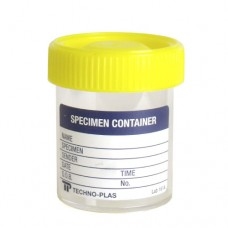
As our pets are not able to communicate any pain or discomfort that they experience, we as veterinarians have to deduce from the clinical signs we observe any underlying illness, injury or disease.
Being able to obtain as much useful information as possible is very important in making a diagnosis. A detailed description of the presenting signs coupled with a complete physical examination performed by your veterinarian is the best way to begin the process of achieving a diagnosis. The process may include further testing or diagnostic work-up.
By making available the opportunity to obtain as much information as possible, unnecessary testing and costs can be avoided. Urine sampling at the time of a regular health check or when your pet is presenting ill, gives our veterinarians the opportunity to get as much diagnostic information as possible in an inexpensive way.
What can be determined from urinary testing?
- Urine concentration. Measurement of specific gravity can give an indication of the concentrating ability of the kidneys. Dilute urine in an animal that is dehydrated (when the kidneys should be making concentrated urine) is an obvious problem. Consistently dilute urine is often part of many diseases
- Urine Protein. (proteinuria) can be an indication of kidney disease or there may be abnormal circulating proteins produced by underlying disease (i.e. Bence-Jones proteins)
- Urinary Glucose. This is one of the hallmarks of diabetes though can also occur with stress
- Urinary ketones. Again produced in diabetic animals though can also occur with starvation or significant liver disease
- Bilirubin. Present in the urine when there is obstructive liver disease or when there is a breakdown of red bloods cells in the circulation.
- Urinary Blood. Obviously this is a cause for concern and can occur in any number of conditions with bleeding occurring at any point in the urinary tract, kidneys, bladder or urethra (both in male and female). Obviously female dogs can also pass blood when in season
- Urinary sediment. Urinary crystals, calcium and the nature of cellular debris can give information as to the lower urinary disease i.e. Bladder stones, urinary infections, bladder carcinoma
The best urine sample is as “fresh as possible”. The first urine produced in the morning is the preferable as it should be well concentrated with most animals inclined not to drink overnight.
It is best collected by introducing your dog to a friendly patch of grass and collecting in clean shallow container (washed in soapy water and rinsed well, before drying with a clean cloth). An old frying pan (which has a handle) or Chinese take away food container would be suitable.
Cat urine can be collected by first cleaning the litter tray as before but placing within it a catrine non-absorbable substrate in place of the usual litter. The urine is simply collected from around the beads with a plastic pipette. Of course some cats don’t cooperate or there are multiple cats in the household.
Simply presenting the cat first thing in the morning before it has used the litter or having been outside to soil with a full bladder means we can obtain the urine directly from the bladder with a very fine needle by aspiration.
Should you not be able to get to the vet with your urine sample i.e. the sample was collected the evening before, it will keep quite well refrigerated overnight.
Please do yourself, your vet and the patient (your beloved pet) a favor and present a urine sample as part of your pet’s regular veterinary visits. Urine Sample pots(free of charge) and catrine litter are available from the staff at reception.
Please contact the clinic on 54282805 if you have any further questions.


